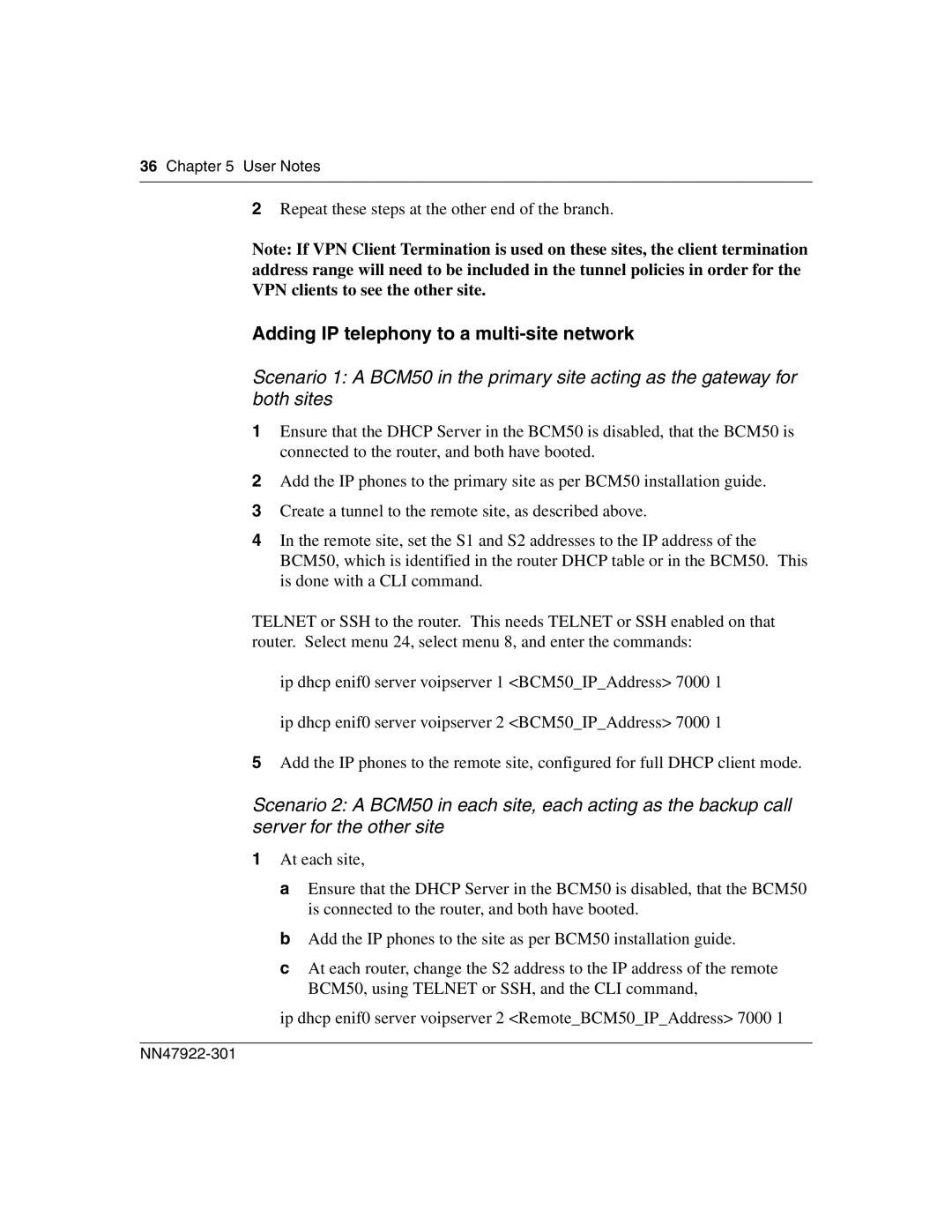
36 Chapter 5 User Notes
2Repeat these steps at the other end of the branch.
Note: If VPN Client Termination is used on these sites, the client termination address range will need to be included in the tunnel policies in order for the VPN clients to see the other site.
Adding IP telephony to a multi-site network
Scenario 1: A BCM50 in the primary site acting as the gateway for both sites
1Ensure that the DHCP Server in the BCM50 is disabled, that the BCM50 is connected to the router, and both have booted.
2Add the IP phones to the primary site as per BCM50 installation guide.
3Create a tunnel to the remote site, as described above.
4In the remote site, set the S1 and S2 addresses to the IP address of the BCM50, which is identified in the router DHCP table or in the BCM50. This is done with a CLI command.
TELNET or SSH to the router. This needs TELNET or SSH enabled on that router. Select menu 24, select menu 8, and enter the commands:
ip dhcp enif0 server voipserver 1 <BCM50_IP_Address> 7000 1
ip dhcp enif0 server voipserver 2 <BCM50_IP_Address> 7000 1
5Add the IP phones to the remote site, configured for full DHCP client mode.
Scenario 2: A BCM50 in each site, each acting as the backup call server for the other site
1At each site,
a Ensure that the DHCP Server in the BCM50 is disabled, that the BCM50 is connected to the router, and both have booted.
b Add the IP phones to the site as per BCM50 installation guide.
c At each router, change the S2 address to the IP address of the remote BCM50, using TELNET or SSH, and the CLI command,
ip dhcp enif0 server voipserver 2 <Remote_BCM50_IP_Address> 7000 1
